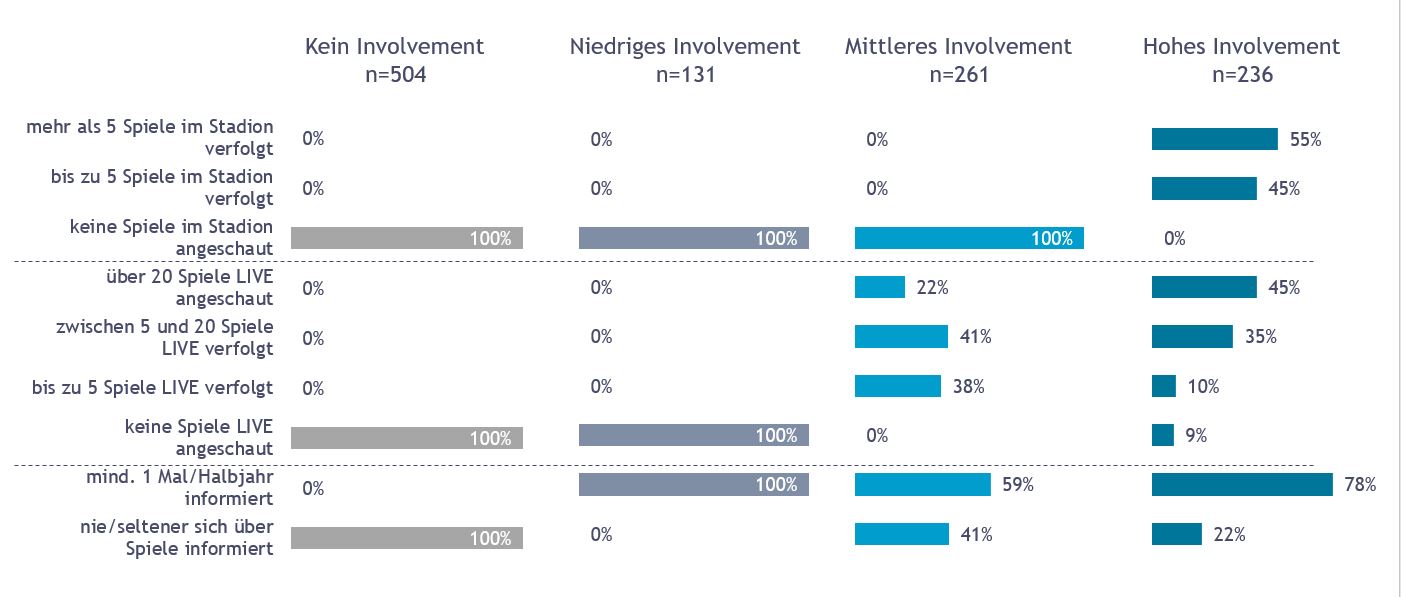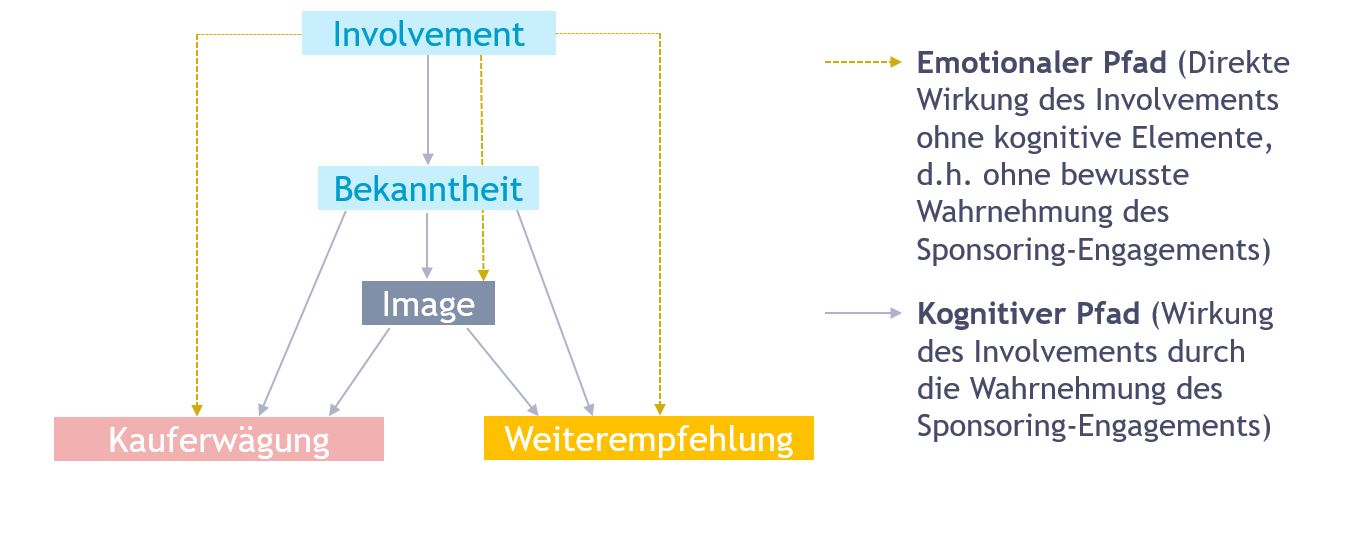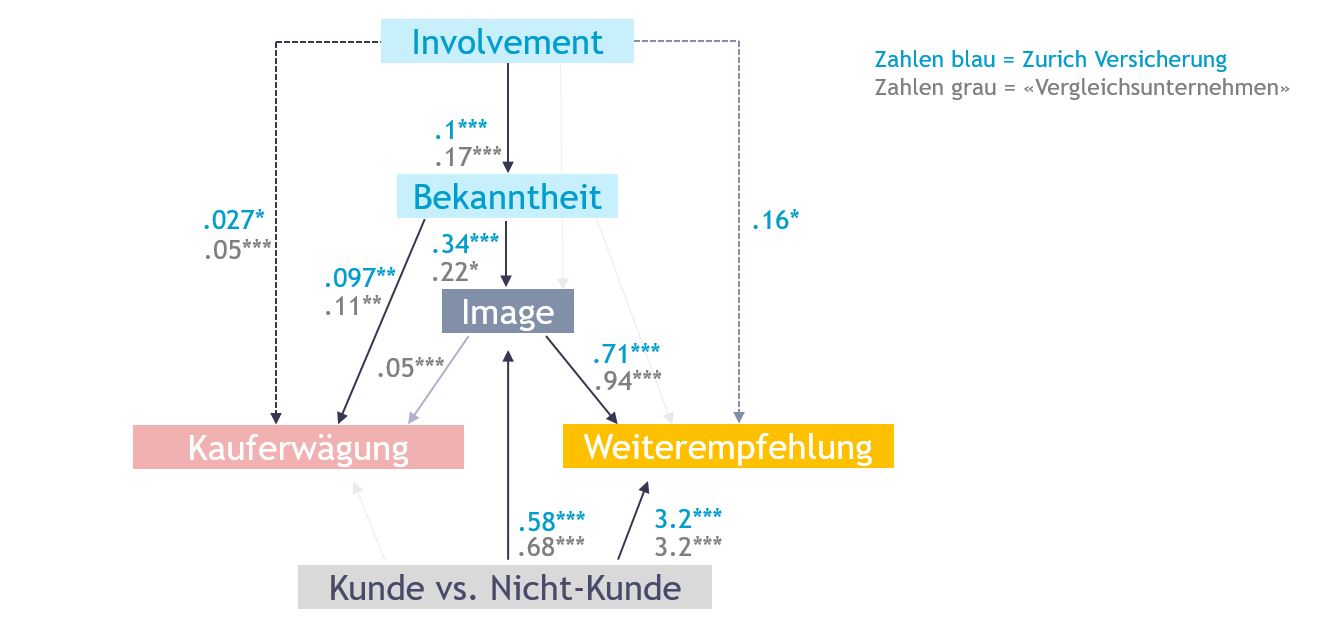The results show that involvement does indeed have a significant influence on the awareness of the sponsorship measures, both at Zurich Insurance and at peer companies. Thus, following ice hockey via various media, such as sports news, live games but also watching the games in the stadium leads to the sponsoring measures being recognised. This in turn leads to a positive perception of the company (image). By means of implicit measurement without reference to ice hockey, we were able to prove that those who know that Zurich and the comparison company sponsor ice hockey implicitly evaluate the companies more positively.
Awareness of the sponsoring activities also has a positive influence on the purchase consideration. The influence is small but significant (ß = .097 for Zurich and ß = .11 for the comparison company). The positive image, for its part, primarily influences recommendation (ß = .71 for Zurich and ß = .94 for the comparison company), but not the purchase consideration. For the comparison company, on the other hand, there is a slight positive influence of image on the purchase consideration (ß = .05).
When looking at the direct influences of involvement (emotional path), it is noticeable that this also has a significant effect on purchase consideration and recommendation. Increased purchase consideration does not result from awareness of the sponsorship measures (cognitive path), but directly from attention and involvement in relation to ice hockey (ß = .027 for Zurich and ß = .05 for the comparison company).
In addition, we included customer status (customer vs. non-customer) in the model to test for spurious correlations. Although this influences image and recommendation, the effects of sponsorship do not disappear even when controlling for customer status.
In summary, sponsorship measures have the following implications for a company:
- As expected, sponsorship measures are perceived primarily when there is close and frequent engagement with the sponsored event. The chances of perceiving the sponsor (through frequent interaction) are thus decisive. People who are interested in a sport and follow it frequently and across multiple platforms are thus more likely to know who is sponsoring the event.
- Sponsorship measures lead to an improvement of the image as well as to the respondent showing a higher willingness to recommend the company to others.
- Sponsorship measures also positively influence the consideration to buy products from the sponsor.
- The increase in purchase consideration as well as willingness to recommend takes place both consciously (cognitive path), in that the (potential) customers know who sponsors the event, and unconsciously (emotional path), without consciously perceiving sponsors. In the case of the latter, the prerequisite is that the games are followed with a high level of involvement (preferably via several channels and in the stadium).
Of course – as everyone involved in marketing knows – sponsorship cannot usually be a «main lever» for the factual buying behaviour of customers.
Other factors such as customer satisfaction or pricing normally contribute much more to positive sales development.
With this study, however, we were able to show that sponsoring is nevertheless much more than just a «hygiene measure» – sponsoring plays an important role in the public perception of a company and can thus achieve the desired effect – namely, positively influence the attitude of (potential) customers.
1 Zurich Insurance agrees to the publication of the results.
2 cf. M. Zengel 2014: The effect of sports sponsorship
 Deutsch
Deutsch
 English
English
 Français
Français





